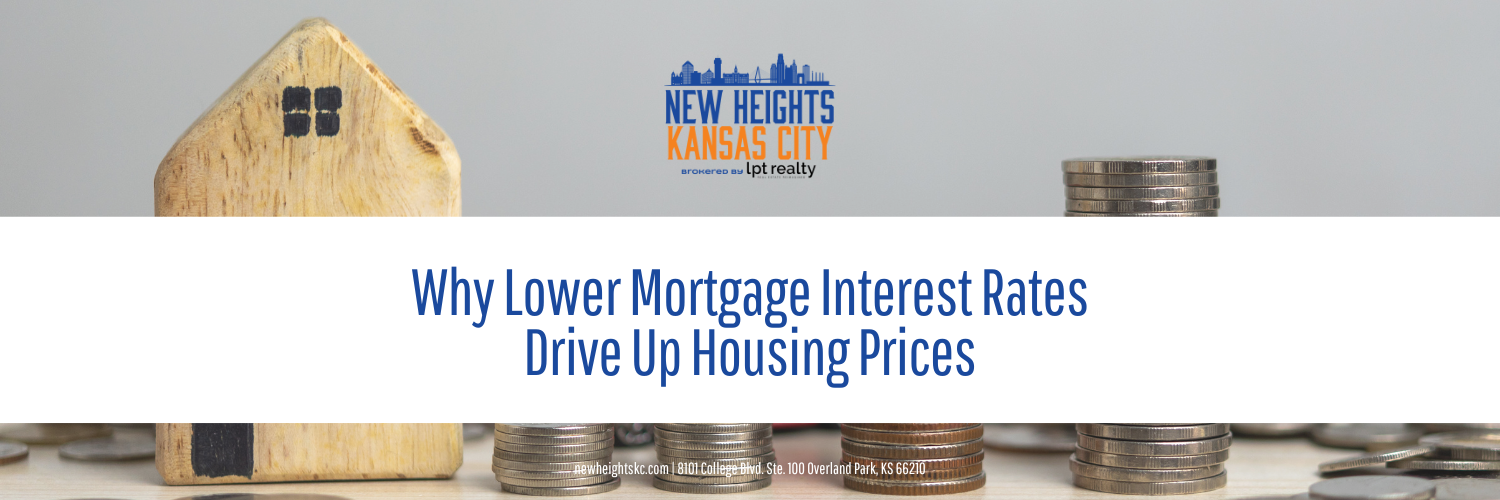Why Lower Mortgage Interest Rates Drive Up Housing Prices

When mortgage interest rates drop, it often feels like good news across the board—especially for homebuyers hoping for lower monthly payments. But here's a twist that catches many by surprise: when the Federal Reserve lowers interest rates, home prices usually go up.
Understanding why this happens is crucial for anyone thinking about buying, selling, or investing in real estate. Whether you're a first-time buyer, a seasoned investor, or a homeowner curious about timing the market, let’s explore how and why mortgage interest rates and housing prices are deeply connected—and what that means for your next move.
What Happens When the Fed Lowers Interest Rates?
First, let’s clear up a common misconception: the Federal Reserve (often called "the Fed") doesn’t directly set mortgage interest rates. Instead, it adjusts something called the federal funds rate, which is the interest rate at which banks lend money to each other overnight.
When the Fed lowers the federal funds rate, borrowing becomes cheaper across the board—for banks, businesses, and yes, homebuyers. This action usually causes mortgage lenders to lower their rates too, making home loans more affordable.
This is where the housing market starts to heat up.
Lower Mortgage Rates = More Buying Power
When mortgage interest rates fall, buyers can afford more home for the same monthly payment.
For example, let’s say a buyer has a budget of $2,000 per month for their mortgage. At a 7% interest rate, that budget may afford a $300,000 home. But if rates drop to 5%, that same $2,000 could stretch to a $350,000 home—or more.
This increase in purchasing power creates a surge in buyer demand, especially when rates drop quickly or significantly. More people are willing—and able—to jump into the market. And as basic economics tells us: when demand rises and supply doesn’t increase at the same pace, prices go up.
Supply and Demand: The Core of Rising Housing Prices
In real estate, home prices are primarily driven by supply and demand. Here’s how the cycle typically plays out when the Fed cuts rates:
-
Lower rates = lower monthly mortgage payments.
-
Lower payments attract more buyers into the market.
-
Increased buyer competition leads to bidding wars.
-
Sellers respond by raising prices—or waiting for the highest offer.
-
Home values appreciate—sometimes rapidly.
Unless the number of homes for sale (housing inventory) also increases at the same rate—which it often doesn’t—we get a competitive seller’s market where prices climb.
Why Don’t Prices Stay Low to Match Lower Interest Rates?
It might seem logical that falling interest rates should lead to more affordable housing overall. But while monthly payments may be lower, the actual purchase prices of homes trend upward due to buyer competition.
So, while your mortgage payment might shrink, the price tag of the house itself is likely to go up.
This is why many economists and financial planners say: You can’t time the housing market perfectly. If you wait for lower rates, you may pay more for the home itself.
Real-World Example: What Happens When Rates Drop?
Let’s take a look at a simplified example:
| Scenario | Interest Rate | Home Price | Monthly Payment (Approx.) |
|---|---|---|---|
| Before Fed Cut | 7.0% | $350,000 | ~$2,330 |
| After Fed Cut | 5.5% | $390,000 | ~$2,330 |
In both cases, the monthly payment stays about the same, but in the second scenario, the buyer is paying $40,000 more for the home. That increase in purchase price reflects rising demand caused by the lower mortgage rate.
Investor and Seller Behavior Also Contribute
It’s not just buyers who react to falling interest rates. Investors and homeowners take notice too, which creates a ripple effect:
-
Investors re-enter the market, hoping to buy low and sell high in a rising-price environment.
-
Sellers may delay listing, expecting higher prices as more buyers flood the market.
-
Builders may slow production, concerned about material costs and tightening margins—keeping inventory low.
All of these behaviors further limit supply, pushing prices up even more.
The Emotional Factor: Fear of Missing Out (FOMO)
Let’s not forget the psychology of the market.
When rates drop, buyers often feel urgency, thinking this could be their only window to “lock in a low rate” before prices rise. This creates FOMO (Fear of Missing Out), encouraging more buyers to act quickly, often with aggressive offers.
This emotional momentum contributes significantly to price surges, especially in hot markets with already limited inventory.
Should You Wait for Rates to Drop Before Buying?
This is the million-dollar question.
While low interest rates can help you save money over the life of your loan, waiting for them to drop might cost you more in the long run if home prices increase faster than rates decrease.
Here’s what to consider:
-
If rates drop, prices will likely rise.
-
If rates rise, prices may stabilize or fall—but your mortgage payment could still be higher.
-
The best time to buy is when you’re financially and personally ready—not just when the Fed makes a move.
Final Thoughts: What You Can Do Now
Understanding the connection between mortgage interest rates and housing prices is essential for making smart real estate decisions. If you're navigating this market, here are some quick takeaways:
-
Talk to a trusted lender to understand your current purchasing power.
-
Get pre-approved so you’re ready to act quickly in a competitive market.
-
Work with an experienced real estate agent who understands local pricing trends and can help you make strategic offers.
-
Focus on your long-term goals. If you plan to stay in your home for 5-10 years or more, a slightly higher price or interest rate today may balance out in the long run.
Remember: the market will always fluctuate. The key is to make your move when the time is right for you—not just the headlines.
Categories
Recent Posts











